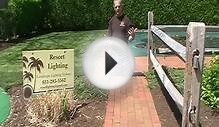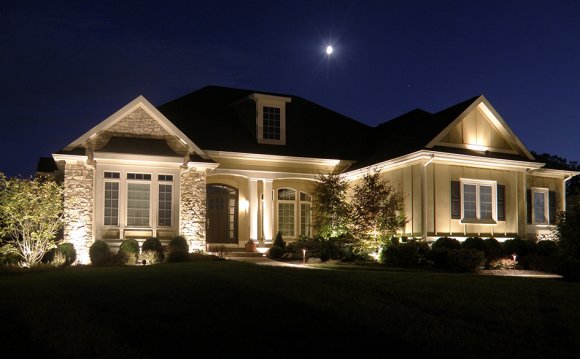
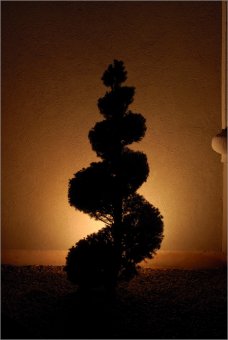 Correct lighting techniques will highlight your important features and create the perfect amount of drama in a yard. Find out what techniques work best for your home's architectural features, garden accents, outdoor living spaces, or backyard oasis.
Correct lighting techniques will highlight your important features and create the perfect amount of drama in a yard. Find out what techniques work best for your home's architectural features, garden accents, outdoor living spaces, or backyard oasis.
Silhouetting - By placing a spotlight behind the feature, aimed towards an adjacent wall, you can create an illuminated backdrop. This dark outline of the object is useful for showcasing plants and other dense features. It looks especially striking in the sunset.
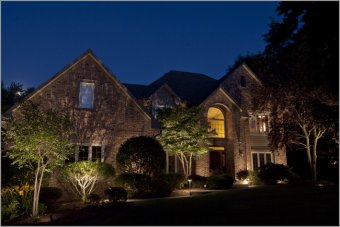 Shadowing - A similar technique to silhouetting, shadowing also places the fixture towards the base of the feature, aimed towards an adjacent wall. However, the goal is to create a softer shadow, and often works best with a tree that has open, delicate foliage. The effect of the tree's movement in the wind is sure to add drama to any home facade.
Shadowing - A similar technique to silhouetting, shadowing also places the fixture towards the base of the feature, aimed towards an adjacent wall. However, the goal is to create a softer shadow, and often works best with a tree that has open, delicate foliage. The effect of the tree's movement in the wind is sure to add drama to any home facade.
Up-lighting - Offering a greater contrast effect than typical wall-washing, spotlight fixtures are placed closer to a building for a bolder effect.
Moonlighting - Create moonlighting techniques by placing a large fixture with a full glare guard high up inside a tree, and angled downwards. This effect looks like moonlight shining down through the branches. It causes attractive shadow patterns on the ground to appear, plus it provides a very natural and beautiful lighting effect.
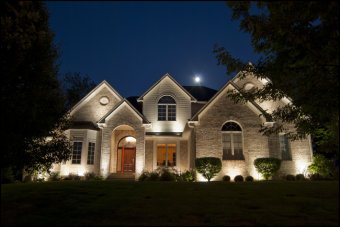 Down-lighting - The down-lighting technique is similar to the moonlighting technique, although brighter and less subtle. Place a fixture high up, inside a feature like a trellis, tree, or eave, and cast downwards over a large area. Place the light higher if you intend to illuminate a large portion of the yard, and lower if you wish to illuminate a path or garden.
Down-lighting - The down-lighting technique is similar to the moonlighting technique, although brighter and less subtle. Place a fixture high up, inside a feature like a trellis, tree, or eave, and cast downwards over a large area. Place the light higher if you intend to illuminate a large portion of the yard, and lower if you wish to illuminate a path or garden.
Path-lighting - Path-lighting is created by placing small fixtures along the borders of walkways, driveways, and patios. It is important that the style of these path lights be considered carefully. It is also important to be sure that they are positioned to illuminate the path, but also placed so that they avoid being kicked, moved, or getting in the way of the lawnmower.
YOU MIGHT ALSO LIKE


